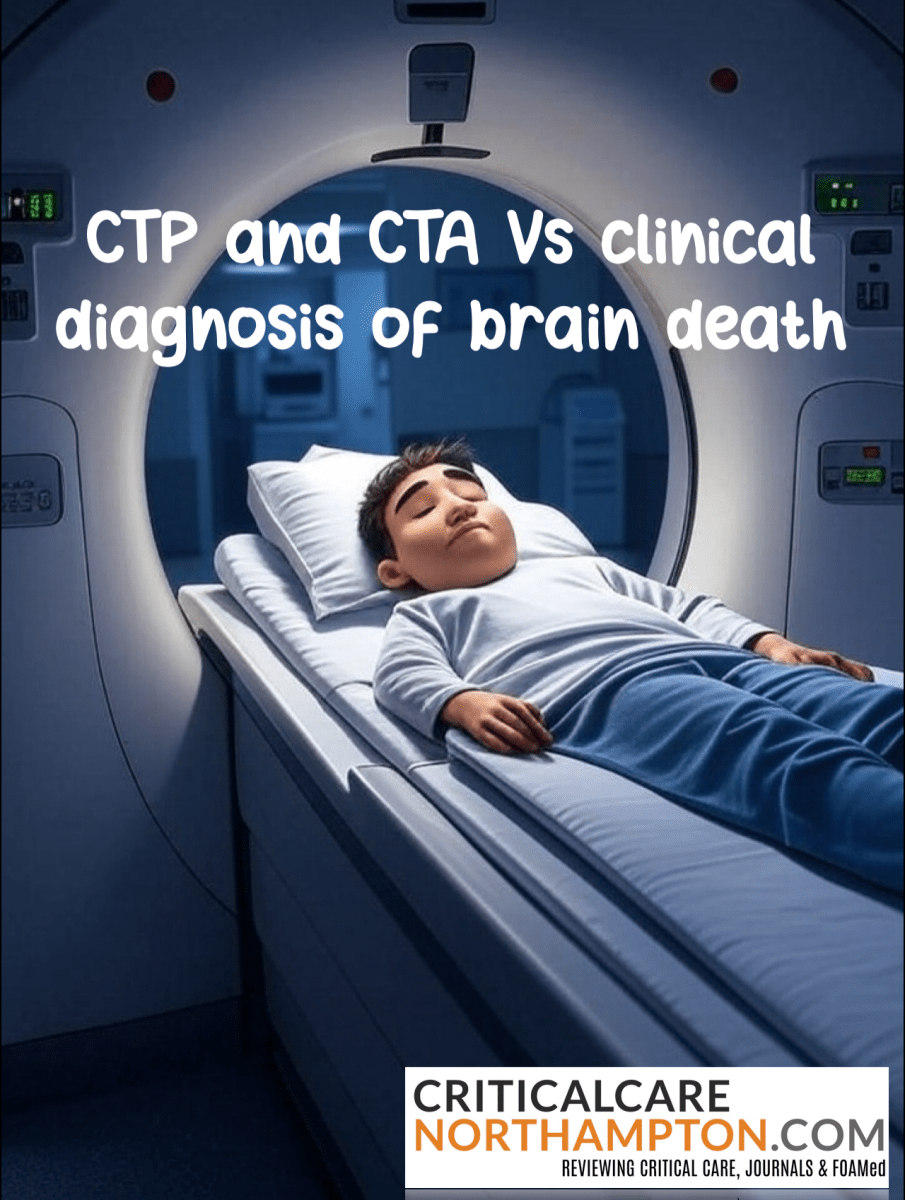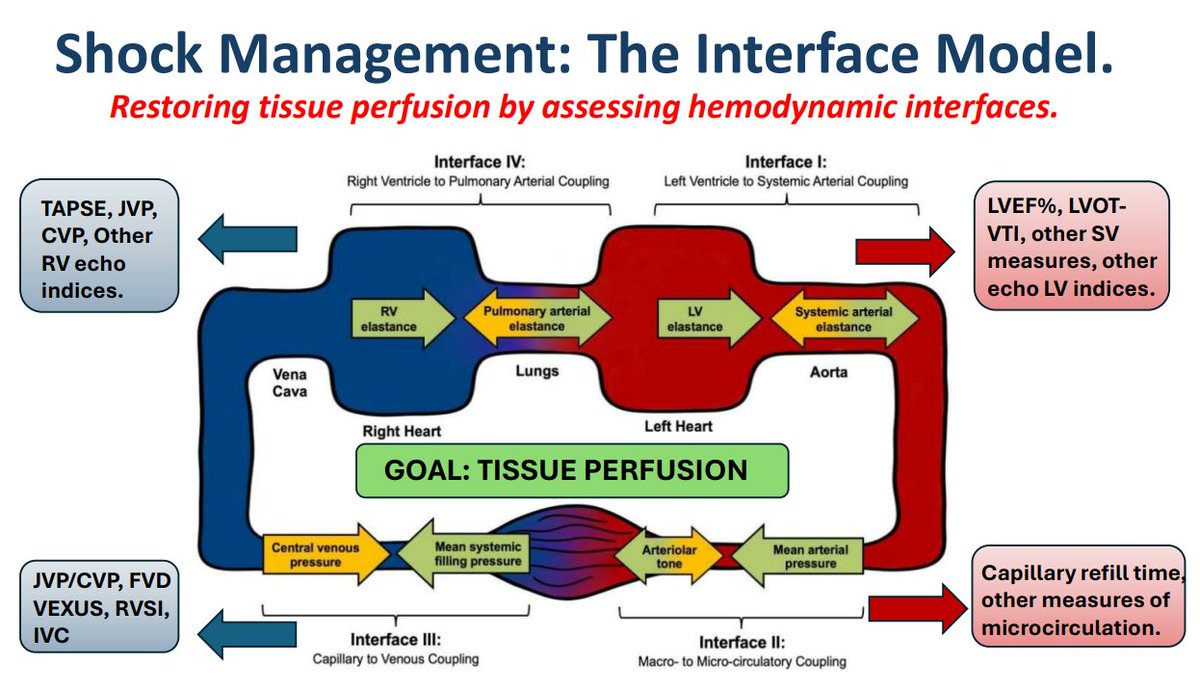What was it?
Multicenter, prospective diagnostic cohort study evaluating the diagnostic accuracy of computed tomography perfusion (CTP) and computed tomography angiography (CTA) compared to clinical evaluation for determining death by neurologic criteria (DNC, also known as brain death) in critically ill patients.
The Devil in the Details!
- 140 patients analyzed across 8 Canadian hospitals.
- Adult patients (≥18 years) suspected of DNC, undergoing clinical evaluation per standard protocols.
- Intervention: CTP and CTA performed concurrently with or after clinical DNC evaluation.
- Primary outcome: Sensitivity and specificity of CTP/CTA for confirming DNC, using clinical evaluation as the reference standard.
- Secondary outcomes: Agreement between CTP/CTA and ancillary tests (e.g., EEG, transcranial Doppler), inter-rater reliability of imaging interpretation, and safety (e.g., contrast-related adverse events).
- Exclusion criteria: Contraindications to CT (e.g., contrast allergy, severe renal impairment), hemodynamic instability, or inability to obtain consent.
The Results!
- CTP/CTA demonstrated high sensitivity (95.2% [95% CI 89.1, 98.4]) and specificity (97.8% [95% CI 92.3, 99.7]) for confirming DNC compared to clinical evaluation.
- Positive predictive value: 98.1% [95% CI 93.2, 99.8]; negative predictive value: 94.6% [95% CI 87.8, 98.2].
- Inter-rater agreement for CTP/CTA interpretation was excellent (kappa = 0.92 [95% CI 0.87, 0.96]).
- Agreement with other ancillary tests (e.g., EEG) was moderate (kappa = 0.65 [95% CI 0.52, 0.78]).
- Safety: No serious adverse events related to contrast administration; 3 patients (2.1%) had mild transient renal dysfunction.
- Median time from clinical suspicion to CTP/CTA imaging: 4.2 hours [IQR 2.8, 6.1].
They concluded
The authors concluded that CTP/CTA is a highly sensitive and specific ancillary test for confirming DNC in critically ill patients, with potential to serve as a reliable, non-invasive alternative or adjunct to clinical evaluation, particularly when clinical assessment is confounded (e.g., by sedatives or spinal reflexes).
Gripe Point Summary!
Detailed gripes below, but in short:
- Limited generalizability due to specialized settings (Canadian academic centers).
- Lack of blinding in clinical evaluations raises risk of bias.
- Small sample size relative to clinical importance of DNC determination.
- Exclusion of hemodynamically unstable patients limits applicability.
- No long-term follow-up on organ donation outcomes.
- Potential for overfitting in imaging interpretation models.
- Cost and accessibility of CTP/CTA not addressed.
- Variability in timing of imaging relative to clinical assessment.
Our Summary
In critically ill patients suspected of DNC, CTP/CTA showed excellent diagnostic accuracy (sensitivity 95.2%, specificity 97.8%) compared to clinical evaluation, with minimal safety concerns. This study supports CTP/CTA as a promising ancillary test for DNC, especially in complex cases, but broader applicability and real-world feasibility need further exploration.
Who’s worked on this before?
Further gripes
- Limited generalizability: Conducted in Canadian academic centers with advanced neuroimaging capabilities, which may not reflect resource-limited or community hospital settings.
- Risk of bias: Clinical evaluations were not blinded to CTP/CTA results in some cases, potentially inflating agreement between tests.
- Sample size: 140 patients is modest for a condition with significant clinical and ethical implications, reducing statistical power for rare outcomes (e.g., false negatives).
- Exclusion criteria: Hemodynamically unstable patients or those with contrast contraindications were excluded, limiting applicability to real-world ICU populations where such patients are common.
- No organ donation outcomes: The study did not assess whether CTP/CTA influenced organ donation rates or family decision-making, a key practical implication of DNC determination.
- Overfitting risk: High inter-rater agreement may reflect training of radiologists in a controlled research setting, potentially overestimating real-world reliability.
- Cost and accessibility: The study did not address the cost of CTP/CTA or its availability in non-academic settings, critical for widespread adoption.
- Timing variability: The interval between clinical suspicion and imaging (median 4.2 hours) varied widely, potentially affecting consistency of results.
- Reference standard limitations: Clinical DNC evaluation, while standard, is not infallible; confounders like sedatives or hypothermia were not fully explored.
- Moderate agreement with other ancillary tests: Discrepancies with EEG or transcranial Doppler suggest CTP/CTA may not fully replace existing tests.
- Lack of patient diversity: Limited demographic data (e.g., age, etiology of brain injury) make it unclear if results apply across diverse populations.
- Short-term safety focus: While no serious adverse events were reported, long-term renal outcomes in patients with mild dysfunction were not tracked.
CCN’s Reflection
This multicenter study makes a strong case for CTP/CTA as a reliable, non-invasive tool for confirming DNC, with impressive diagnostic accuracy and a clean safety profile. However, its academic setting, modest sample size, and lack of real-world implementation data (e.g., cost, accessibility, organ donation impact) raise questions about scalability. It’s a solid step toward modernizing DNC diagnosis, but we need larger, more diverse trials and practical evaluations to ensure it’s ready for prime time in the ICU. Stay tuned for real-world follow-ups!
Written by JW









